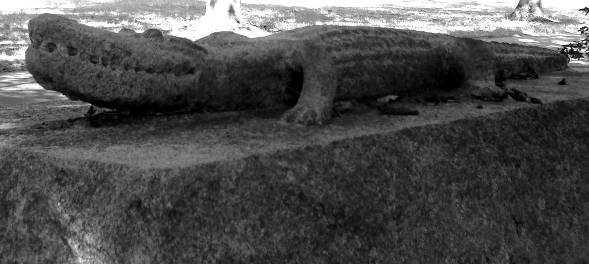On facebook, several months ago, there was particular interest in ghosts
at Evergreen Cemetery including the Dodd mausoleum. The initial attraction to
this gorgeous mausoleum was that this object of beauty could have been in such
a pitiful state of disrepair. It is no longer. And whether ghosts dance at
Evergreen is for individual contemplation, but the true story of the Dodds is
probably just as interesting. Cemetery
records indicated Dodd family members were all interred on April 15 and 16,
1911. A mass murder, a fire, a buggy crash?
The Dodds buried in Evergreen Cemetery were born in England, but the only Dodd who was a Jacksonville, Florida resident when she died was Emma Brown Dodd. Her probate file was therefore in the Duval County Courthouse. Full of information, it chronicled Emma moving into the luxurious Ambassador Hotel apartments at 320 West Church Street. She owned the block abutting it framed by both Church Street and West Julia, and collected rent from tenants on that property.
According to the
probate files, she died at “about 60," on January 8, 1910. Her death in
January may have been caused from an accident in October 1909 based on a
drugstore receipt from Wm. Fairlie Prescription Druggist at Bay and Florida
Avenue. On the list, among other things, were bandages, oiled silk, codeine,
and epson salts. However, Emma died at the DeSota Sanitorium, now St. Vincent’s
hospital in Riverside. After a six day stay there, she was billed $33.88, which
included room and board, special nursing and supplies.
After her death Emma Dodd Brown waited for her vault to be
finished almost 16 months. She lay in the holding vaults at Evergreen Cemetery,
constructed partially underground similar to prairie dirt houses. She rested
among those being shipped north during the winter season waiting for the spring
thaw so the ground could be shoveled in their frigid homes. At last everything
and everyone was ready and the Dodds moved into the lovely mausoleum.
In Mrs. Dodd’s Will, she specifically requested the
construction of a mausoleum not only to house her body as well as to have her
families’ bodies moved from Sanford, Florida. Her husband and son, John Sr. and
Jr., had died of typhoid fever as did her mother, Sophia Marchand. She further
instructed land for the mausoleum was to be purchased at Woodlawn or Evergreen,
which were together “near Jacksonville, Florida.” The Dodd mausoleum was to be
constructed for no more than $3,000, but the bodies were to be moved no matter
the expense. Moving the family cost $30 apiece, $15 from each funeral parlor
involved.
So strong was her desire for the safety of her remains that
her executors, with permission of her beneficiary, added a marble veneer to the
mausoleum costing an extra $1,600. Her beneficiary later wrote to the marble
company “that from an artistic standpoint, the vault has been ruined. Its finest
features have been lost although it probably has gained a 1,000 % increase in
durability and 'perpetuality'."
The irony of this building’s miserable plight was Emma’s
great concern for the excellence of her perpetual resting place which she had
specifically ordered in her Will. Another interesting bit found in the probate
records was a small but powerful contract, approximately 4” by 5”, between
Dobbs and Evergreen Cemetery. The cemetery had agreed to maintain perpetual
care of Mrs. Dobb’s plot no questions asked. In the present world, in certain
places this promise seems to be an anomaly. However, as soon as existence of
the contract, buried in an old manila folder for a century, was presented to
the cemetery staff, the world began to heave and Evergreen returned the
mausoleum, neglected for nearly 100 years, to its intended glory.












